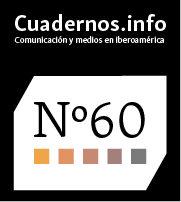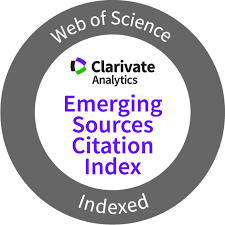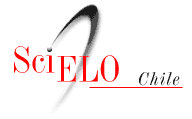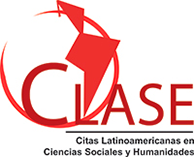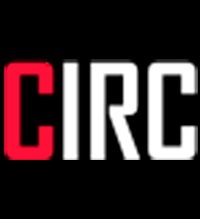Communication at equestrian events: Analysis of pre-event advertising, broadcasting and post-event media coverage
DOI:
https://doi.org/10.7764/cdi.60.84280Keywords:
Media, advertising, events, sport, horse riding, equestrian sectorAbstract
Communication strategies and techniques in the sports field have great potential to promote events and expand their reach, thereby contributing to increase the popularity of each sport. In the specific case of equestrian sport in Spain, although it is a minority sport, events are held on a very frequent basis. The main objective of this study is to analyze the perception of the sector's stakeholders regarding communication strategies before and after equestrian events. In order to achieve the aim outlined above, a methodology combination of quantitative analysis (based on survey data) and qualitative analysis (based on the results of semi-structured interviews and a focus group with different professional members of the stakeholders) has been used. The results reveal that although younger people and those who participate professionally tend to be more satisfied with pre-event publicity and post-event coverage of equestrian events, overall satisfaction is low. It is concluded that there is a need for the equestrian sector to implement improvements that increase the efficiency of its communication campaigns.
Downloads
References
Alabart-Algueró, J. Gutiérrez-Aragón, Ó., & Gassiot-Melian, A. (2021). Informe sobre la utilidad del empleo de influencers y redes sociales en el ámbito ecuestre en función de la estructura de la actividad económica relacionada con el caballo en España: tendencias actuales, fomento y aprovechamiento potencial (Report on the Usefulness of Employing Influencers and Social Media in the Equestrian Sector Based on the Structure of the Horse-Related Economic Activity in Spain: Current Trends, Promotion, and Potential Utilization). Escuela Universitaria Mediterrani de Barcelona. https://doi.org/10.13140/RG.2.2.15062.16960
Bao, Y., Yang, H., Gao, Z., & Xu, H. (2023). How do pre-event activities alleviate congestion and increase attendees’ travel utility and the venue's profit during a special event? Transportation Research Part B: Methodological, 173, 332-353. https://doi.org/10.1016/j.trb.2023.05.013
Bazzanella, F., Schnitzer, M., Peters, M., & Bichler, B.F. (2023). The role of sports events in developing tourism destinations: a systematized review and future research agenda. Journal of Sport & Tourism, 27(2), 77-109. https://doi.org/10.1080/14775085.2023.2186925
Billings, A. C., Butterworth, M. L., & Turman, P. D. (2017). Communication and sport: Surveying the field. SAGE.
Brochado, A., Dionísio, P., Do-Carmo-Leal, M., Bouchet, A., & Conceição, H. (2022). Organizing sports events: the promoters’ perspective. Journal of Business & Industrial Marketing, 37(6), 1281-1298. https://doi.org/10.1108/JBIM-10-2020-0451
Broms, L., Bentzen, M., Radmann, A., & Hedenborg, S. (2021). Stable cultures in cyberspace: A study about equestrians’ use of social media as knowledge platforms. Scandinavian Sport Studies Forum, 12, 33-58. https://is.gd/PSVl0Q
Broms, L., Hedenborg, S., & Radmann, A. (2022). Super equestrians. The construction of identity/ies and impression management among young equestrians in upper secondary school settings on social media. Sport, Education and Society, 27(4), 462-474. https://doi.org/10.1080/13573322.2020.1859472
Casper, J. & Pfahl, M. (2015). Sport Management and the Natural Environment: Theory and Practice. Routledge. https://doi.org/10.4324/9781315881836
Cazorla-Milla, A., Mataruna-Dos-Santos, L. J., & Munoz-Helu, H. (2020). Content strategy and fan engagement in social media the case of PyeongChang winter Olympic and paralympic games. Annals of Applied Sport Science, 8(3), e905. https://doi.org/10.29252/aassjournal.905
Chen, K. C., Gursoy, D., & Lau, K. L. K. (2018). Longitudinal impacts of a recurring sport event on local residents with different level of event involvement. Tourism Management Perspectives, 28, 228-238. https://doi.org/10.1016/j.tmp.2018.09.005
Chen, Z., Li, S., Wu, Q., Wu, Z., & Xin, S. (2023). The decision-making determinants of sport tourists: a meta-analysis. Current Issues in Tourism, 26(12), 1894-1914. https://doi.org/10.1080/13683500.2022.2077175
Dashper, K. & Buchmann, A. (2020). Multispecies event experiences: Introducing morethan-human perspectives to event studies. Journal of Policy Research in Tourism, Leisure and Events, 12(3), 293-309. https://doi.org/10.1080/19407963.2019.1701791
Du, J., Chen, M. Y., & Wu, Y. F. (2020). The effects of social media on sporting event satisfaction and world of mouth communication: An empirical study of a mega sports event. Information, 11(10), 482. https://doi.org/10.3390/info11100482
Einsle, C. S. & Escalera-Izquierdo, G. (2022). Modelo de impacto de redes sociales en atletas de un evento deportivo mediano (Impact’s model of social networks on athletes of a medium scale sports). Revista Iberoamericana de Ciencias de la Actividad Física y el Deporte, 11(2), 58-76. https://doi.org/10.24310/riccafd.2022.v11i2.14150
Ennis, S. (2020). Globalisation of the sports product. In S. Ennis (Ed.), Sports marketing: A global approach to theory and practice (pp. 213-243). Springer. https://doi.org/10.1007/978-3-030-53740-1_9
Fenton, A., Keegan, B. J., & Parry, K. D. (2023). Understanding sporting social media brand communities, place and social capital: A netnography of football fans. Communication & Sport, 11(2), 313-333. https://doi.org/10.1177/2167479520986149
Fernández-Gómez, E., Fernández-Vázquez, J., Gutiérrez-Martínez, B., & López-Bolás, A. (2024). Micro-influencers: percepción sobre la relación con sus seguidores y acciones comerciales que incrementan su participación (Micro-influencers: perception on the relationship with followers and commercial actions that increase their involvement). Cuadernos.Info, (57), 226–246. https://doi.org/10.7764/cdi.57.63765
Fondevila-Gascón, J. F., Gutiérrez-Aragón, Ó., Moreno-Arrones-Iglesias, P., & AlabartAlgueró, J. (2024). Estrategias de marketing para la Generación Silver en España: factores de éxito (Marketing strategies for the Silver Generation in Spain: Success factors). Revista de Comunicación, 23(2). https://doi.org/10.26441/RC23.2-2024-3538
Fonseca, I., Bernate, J., & Tuay, D. (2022). La responsabilidad social corporativa y los eventos deportivos. Una revisión sistemática de la producción científica (Corporate social responsibility and sporting events. A systematic review of scientific production). Sport TK, Revista EuroAmericana de Ciencias del Deporte, 11, 8. https://doi.org/10.6018/sportk.470131
Getu, Z. (2023). International sport marketing: practical and future implication. Journal Research of Social Science, Economics, and Management, 3(2), 333-351. http://doi.org/10.59141/jrssem.v3i02.537
Gregić, M., Bobić, T., Gantner, R., & Gantner, V. (2024). The use of digital media in equestrian clubs in Croatia. Proceedings, 94(1), 34. https://doi.org/10.3390/proceedings2024094034
Gutiérrez-Aragón, Ó., Fondevila-Gascón, J. F., & Gracia-Conde, A. (2023). El patrocinio como factor condicionante en el desarrollo de las carreras de los deportistas de élite españoles. Desigualdades por género y tipo de deporte (Sponsorship as a determining factor in the development of the careers of Spanish elite athletes. Inequalities by gender and type of sport). Obra Digital, (24), 13-30. https://doi.org/10.25029/od.2023.371.23
Gutiérrez-Aragón, Ó., Gassiot-Melian, A., & Alabart-Algueró, J. (2021). Uso, aceptación y repercusión de las redes sociales y los influencers en el sector ecuestre (Use, acceptance, and the impact of social networks and influencers on the equestrian sector). Doxa Comunicación, Revista Interdisciplinar de Estudios de Comunicación y Ciencias Sociales, 32, 115-142. https://doi.org/10.31921/doxacom.n32a6
Horky, T. (2021). No sports, no spectators–no media, no money? The importance of spectators and broadcasting for professional sports during COVID-19. Soccer & Society, 22(1-2), 96-102. https://doi.org/10.1080/14660970.2020.1790358
Hudson, S., Meng, F., & Cárdenas, D. (2014). Gauging potential demand for new events: A case study with a multi-stage, mixed method approach. International Journal of Event and Festival Management, 5(2), 180-192. https://doi.org/10.1108/IJEFM-11-2013-0039
Islam, T. (2021). Applications of social media in the tourism industry: a review. SEISENSE Journal of Management, 4(1), 59-68. https://doi.org/10.33215/sjom.v4i1.556
Johnson, M. & Barlow, R. (2021). Defining the phygital marketing advantage. Journal of Theoretical and Applied Electronic Commerce Research, 16(6), 2365-2385. https://doi.org/10.3390/jtaer16060130
Kennedy, H., Bakhsh, J. T., Pegoraro, A., & Taks, M. (2024). Bounded impacts: Measuring residents’ social (media) event impacts from a major sport event. Event Management, 28(1), 129-150. https://doi.org/10.3727/152599523X16907613842129
Kwon, Y. & Cornwell, T. B. (2021). Sport sponsorship announcement and stock returns: A meta-analytic review. International Journal of Sports Marketing and Sponsorship, 22(3), 608-630. https://doi.org/10.1108/IJSMS-05-2020-0085
Le-Clinche, S., Martinent, G., & Chanavat, N. (2017). Consumers’ attachment in the sporting equestrian context: a cluster analytic approach. Managing Sport and Leisure, 22(3), 234-254. https://doi.org/10.1080/23750472.2018.1424025
León-Quismondo, J., Burillo, P., Santos, T., & Fernández-Luna, Á. (2023). Success Factors in Sporting Events through IPA Approach: The Case of an International Horse Show Jumping. In G. Cepeda-Carrión, J. García-Fernández, & J. J. Zhang (Eds.), Sport Management in the Ibero-American World. Product and Service Innovations (pp. 204-223). Routledge. https://doi.org/10.4324/9781003388050-17
Lindlof, T.R. & Taylor, B.C. (2017). Qualitative communication research methods (4th Ed.). SAGE. https://is.gd/8rZLxx
Liu, H., Tan, K. H., & Wu, X. (2023). Who’s watching? Classifying sports viewers on social live streaming services. Annals of Operations Research, 325, 743-765. https://doi.org/10.1007/s10479-022-05062-y
Ludvigsen, J. A. L. & Petersen-Wagner, R. (2023). From television to YouTube: digitalised sport mega-events in the platform society. Leisure Studies, 42(4), 615-632. https://doi.org/10.1080/02614367.2022.2125557
Lünich, M., Starke, C., Marcinkowski, F., & Dosenovic, P. (2021). Double crisis: Sport mega events and the future of public service broadcasting. Communication & Sport, 9(2), 287-307. https://doi.org/10.1177/2167479519859208
Millán, O. (2024). Redes sociales y la influencia en la decisión del destino turístico (Social networks and their influence on the decision of the tourist destination). Cuadernos.Info, (57), 315-337. https://doi.org/10.7764/cdi.57.65499
Morgan, A., Taylor, T., & Adair, D. (2020). Sport event sponsorship management from the sponsee’s perspective. Sport Management Review, 23(5), 838-851. https://doi.org/10.1016/j.smr.2020.04.006
Morgan, A., Wilk, V., Sibson, R., & Willson, G. (2021). Sport event and destination co-branding: Analysis of social media sentiment in an international, professional sport event crisis. Tourism Management Perspectives, 39, 100848. https://doi.org/10.1016/j.tmp.2021.100848
Nickell, D. & Johnston, W. J. (2020). An attitudinal approach to determining Sponsorship ROI. Marketing Intelligence & Planning, 38(1), 61-74. https://doi.org/10.1108/MIP-11-2018-0512
Nuseir, M. T. (2020). The effects of sponsorship on the promotion of sports events. International Journal of Business Innovation and Research, 22(2), 191-207. https://doi.org/10.1504/IJBIR.2020.107838
Ouvrein, G., Pabian, S., Giles, D., Hudders, L., & De-Backer, C. (2021). The web of influencers. A marketing-audience classification of (potential) social media influencers. Journal of Marketing Management, 37(13-14), 1313-1342. https://doi.org/10.1080/0267257X.2021.1912142
Parent, M. M. & Ruetsch, A. (2020). Managing major sports events: Theory and practice. Routledge. https://doi.org/10.4324/9780429326776
Pelegrín-Muñoz, A., Huescar-Hernández, E., Cabrera-Perona, V., & González-García, H. (2018). Motivaciones de los aficionados al deporte: un estudio en educación primaria (Sports fans motivations: a study in primary schools). Retos, 34, 267-271. https://doi.org/10.47197/retos.v0i34.60377
Perea-Gómez, S. & Gallardo-Camacho, J. (2023). La innovación comunicativa en los eventos deportivos en Twitch: El formato phygital en España (Communicative innovation in sports events on Twitch: The phygital format in Spain). ESIC Digital Economy and Innovation Journal, 2, e067. https://doi.org/10.55234/edeij-2-067
Radmann, A., Hedenborg, S., & Broms, L. (2021). Social media influencers in equestrian sport. Frontiers in Sports and Active Living, 3, 669026. https://doi.org/10.3389/fspor.2021.669026
Real Federación Hípica Española. (2022). II Estudio del Impacto del Sector Ecuestre en España (2nd Study of the Impact of the Equestrian Sector in Spain). RFHE. https://is.gd/DYTh0b
Rezapouraghdam, H., Saydam, M. B., Altun, O., Roudi, S., & Nosrati, S. (2024). A contemporary systematic literature review of equestrian tourism: emerging advancements and future insights. Journal of Hospitality and Tourism Insights. https://doi.org/10.1108/JHTI-01-2024-0046
Sedky, D., Kortam, W., & AbouAish, E. (2020). The role of sports marketing in attracting audiences towards less popular sports. Journal of Humanities and Applied Social Sciences, 4(2), 113-131. https://doi.org/10.1108/JHASS-04-2020-0059
Shank, M. D. & Lyberger, M.R. (2014). Sports Marketing: A Strategic Perspective (5th Ed.). Routledge. https://doi.org/10.4324/9781315794082
Sigurðardóttir, I. (2021). Segmentation, marketing, venue selection and competitiveness of events. In K. Dashper, G. Helgadóttir, & I. Sigurðardóttir (Eds.), Humans, horses and events management (pp. 74-87). CABI. https://doi.org/10.1079/9781789242751.0074
Tamir, I. & Lehman-Wilzig, S. (2023). The routinization of media events: televised sports in the era of mega-TV. Television & New Media, 24(1), 106-120. https://doi.org/10.1177/15274764221080989
Tian, Y. & Frank, B. (2024). Optimizing live streaming features to enhance customer immersion and engagement: A comparative study of live streaming genres in China. Journal of Retailing and Consumer Services, 81, 103974. https://doi.org/10.1016/j.jretconser.2024.103974
Van-Reeth, D. (2023). The complexities of understanding reported TV audiences for live sports broadcasts. International Journal of Sport Finance, 18(1), 19-34. https://doi.org/10.32731/ijsf/181.022023.02
Vial, C. & Barget, E. (2023). Using a comprehensive approach to measure short-term effects and legacy of sporting events: the case of the Alltech FEI World Equestrian Games™ 2014 in Normandy. Managing Sport and Leisure, 28(4), 412-426. https://doi.org/10.1080/23750472.2021.1928535
Yamakita, R., Bakhsh, J. T., & Parent, M.M. (2024). Stakeholders in major sport events. In H.A. Solberg, R. K. Storm, & K. Swart (Eds.), Research Handbook on Major Sporting Events (pp. 135-149). Edward Elgar Publishing. https://doi.org/10.4337/9781800885653.00019
Zhou, L. J. & Banhidi, M. (2024). Managing sport tourism in communities. In M. Banhidi & F. Moghimehfar (Eds.), International perspectives in sport tourism management (pp. 109-122). Routledge. http://doi.org/10.4324/9781003476658-11
Additional Files
Published
How to Cite
Issue
Section
License
Copyright (c) 2025 Júlia Alabart-Algueró, Óscar Gutiérrez-Aragón, Joan Cuenca-Fontbona, Joan-Francesc Fondevila-Gascón

This work is licensed under a Creative Commons Attribution-NonCommercial-ShareAlike 4.0 International License.

